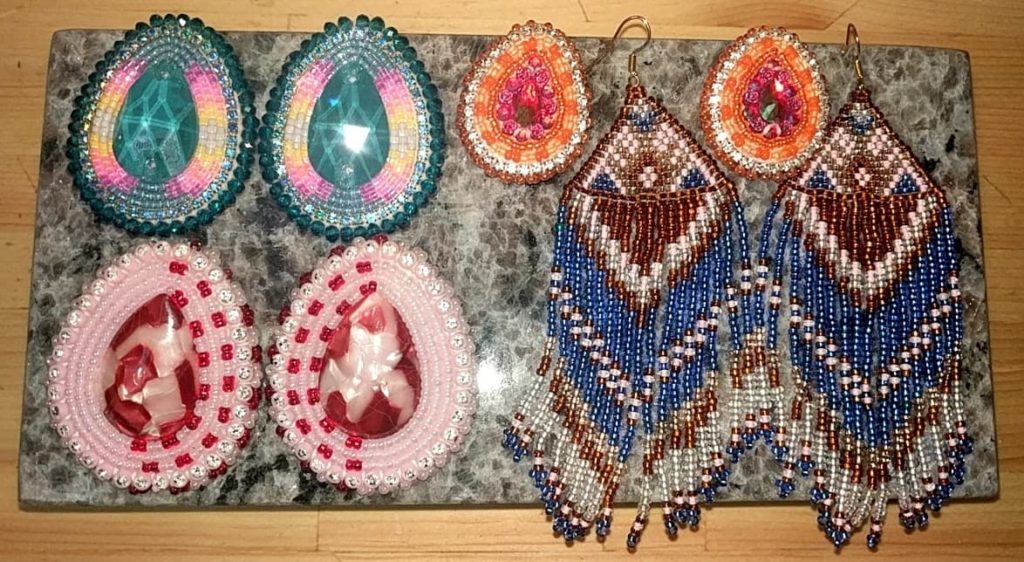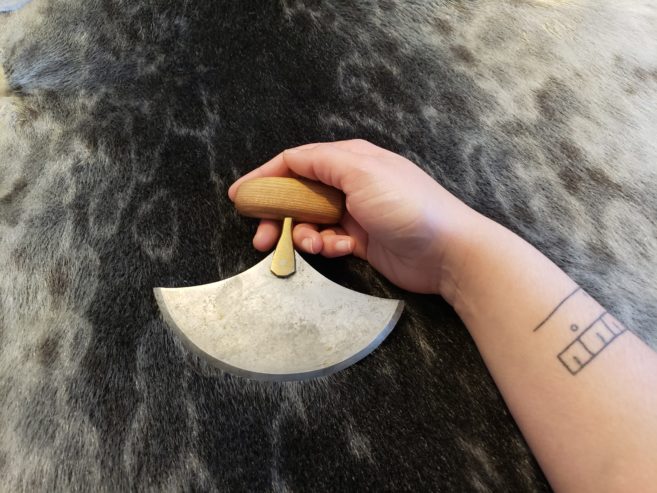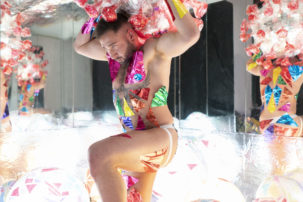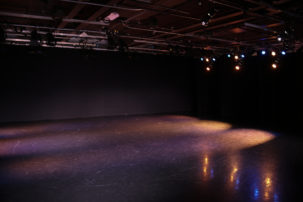At first, I didn’t like wearing traditional clothing like my pualuk (fur mittens), beaded earrings and beaver-fur winter boots in the city. I currently live on Algonquin territory, now known as Ottawa/Aatuvaa. When I wear traditional clothing, it is more obvious that I am Indigenous and there is a significant difference in how people treat me when they can tell. I especially don’t like the fact that much of the attention comes from older men. They stare, and slow down in their vehicles. Some yell out of their windows. The significant change is that when I am Indigenous-presenting, there is an increase in fetishization and hypersexualization toward me, and I am aware this is the same for many Indigenous women.
I am Inuk and Mi’kmaw from Labrador—I grew up knowing how to fish, hunt and pick berries. I always loved baking the berries into blueberry squares, pies, tarts and cakes after my mother and I would pick them. Where I am from, it is quite isolated and the winters are bone-chillingly cold. We experienced “cold days” at school the way some places have snow days, with high schools closing when the temperature dips below -55 Celsius, something unheard of here in Ottawa.
There are no universities in Labrador, so at 18 years old I moved to St. John’s, Newfoundland, to attend Memorial University. This was when I first experienced immense culture shock. I realized that the larger world outside of my home is much more industrialized, capitalistic and colonial. I stood out much more in cities than I ever did in Labrador. There were few Indigenous People—if any—in these new spaces. I especially noticed this when I lived in Newfoundland and Alberta. People in these places noticed my Indigeneity through my physical features: my almond eyes, high cheekbones, high eyebrows, full lips, along with a slightly darker complexion. Due to my physical appearance, I would often get stared at by people in public for long, noticeable periods of time.
After some time of living away from Labrador, I began to get increasingly socially anxious because of the staring. In the city, I struggled to connect with my culture, and that affected my perception of self and sense of belonging. I was missing the Land I am from. My blood is connected to the Land my ancestors come from—when I am home in Labrador, I know that I belong here. I am proud of my heritage as an Indigenous Person because everything within my being is a result of the beautiful land where I am from. That is why we named it Nunatsiavut, which means “our beautiful land” in Inuttitut.
Last year, while I was attending college in Ottawa, I took the bus and O-Train to get to school every day. I was sick and living in a shelter. I was waiting a long time to have dental surgery to remove an infected bolt in my jaw, and at the same time I was recovering from injuries that occurred when I was hit by a car. While travelling to school, I would keep my beaded earrings in my pocket so that no men would talk to me or flirt with me or leer at me. I kept them hidden and only put them on when I got inside of the classroom.
On days when I walked to school I would, however, wear the sealskin mitts my mother made for me, and the beaver-fur boots I bought from a craft store in my hometown. I save them for when I need them. I wear them like armour on especially cold days, or days when I feel a chill in my body. They help me take extra care of myself to ensure I do not get sick.
My fur boots and mitts kept me from getting sick, so I didn’t care about the looks I would receive, the leering, men slowing down in their cars, comments, or the racism. My main concern was my health. I know that culture protected me during that time. Through those judgements when wearing my beaver boots, I built strength in myself which empowered me to further connect with my culture. The fur we wear traditionally as Inuit has been fundamentally used to protect us while living in harsh Northern conditions.
To endure the cold while hunting and travelling on the ice in the North, Inuit wear fur. It is imperative to keep your feet dry while on the ice. Getting wet can mean death because animal fur is naturally water-resistant; wearing fur is the smartest option to ensure comfort and survival in everyday activities. In these environments, synthetic mass-manufactured clothing is simply not as effective or as sustainable as wearing fur.
In her article “There’s a strong ethical case for wearing leather and fur,” Ephrat Livni argues that there has been an ongoing debate of whether “people should wear any materials made from animals—specifically leather, fur, silk, pearls, wool, and feathers.” She argues that “synthetics require more washing and are less durable than many natural materials, ultimately resulting in more water waste and increased disposal of clothing. Every time we wash a polyester item, we’re releasing plastics into the world’s waterways and ultimately leading to the death of flora and fauna.”
The benefit of wearing fur, beads, bone or labradorite in the cities that I have lived in is more than just comforting or ethical. When I wear these things, other Indigenous People notice. We often see the Indigenous-designed clothing first, and then we see each other. Our traditional and contemporary styles help us recognize one another and, in this way, we begin to build connections with one another. Traditional styles and designs have historical cultural meaning beyond function to show whom we are connected to and where we are from. For example, if I see an Indigenous person wearing a parka with an ulu design, then I would think they were Inuit.
Today, I no longer hide my Indigenous identity in public—even if people stare. I wear my sealskin, beaver fur, beads and Indigeneity with pride. Finding the pride to outwardly be my authentic self has been a journey of self-discovery, with many steps along the way and obstacles I have had the resilience to overcome. My traditional clothing and beaded jewellery has become something I cherish; they have protected me in the city, helped me to connect with other Indigenous People and kept me connected to my home and family when I needed it most. I will no longer hide my beaded earring in my pockets anymore.

 Beaded earrings on labradorite, 2021, photo courtesy of Bryanna Brown
Beaded earrings on labradorite, 2021, photo courtesy of Bryanna Brown





